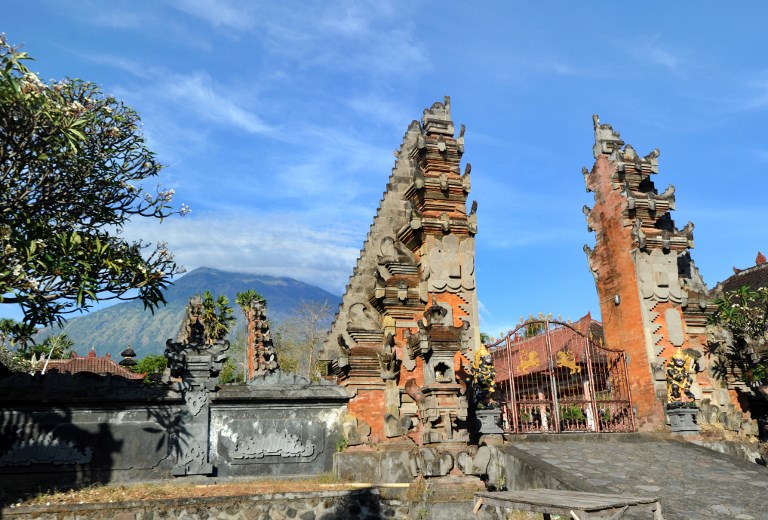Bali’s Mount Agung shot up a column of ash 1,500 meters from the crater on Wednesday morning at 11am, following a similar release on Monday evening.
Ash fall was reportedly experienced in Temukus and Sebudi Villages within the volcano’s exclusion zone in Karangasem.
“But the heaviest ash rains hit Batusesa Village, Rendang. Besides covering agricultural crops, the road in the village was also coated with volcanic ash,” Merdeka quoted Gede Pawana as saying. Pawana is chairman of Pasebaya, a community made up of leaders from 28 local villages focusing on Mount Agung mitigation activities.
Gunung Agung erupsi keluarkan abu vulkanik pada 1/1/2018 pukul 22.40 Wita. Hujan abu vulkanik terjadi di Desa Badeg, Yeha, Temukus, Besakih dan Muncan. Erupsi hanya sesaat. Status Awas. Kondisi gelap malam dan berawan. #Bali #balisafe pic.twitter.com/oO19REhpcn
— Sutopo Purwo Nugroho (@Sutopo_BNPB) January 1, 2018
Officials insist that Bali remains safe outside of the Mount Agung exclusion zone, which is set at a radius of eight to 10 kilometers from the volcano’s crater. Mount Agung is removed from Bali’s busiest tourist areas—it is about 75 kilometers from the tourist hub of Kuta.
However, since the volcano stirred to life in September 2017, Bali’s tourism industry has been hit hard as insurers have for the most part stopped covering Bali trips now that an eruption would be a known event and a nearly three-day shutdown of the airport in November 2017 has also scared off a number of travelers, fearful of getting stranded on the island if winds decide to pick up ash and carry it into the flight path again.
Agung has been on the highest alert level since Nov. 27—officials have been desperate to make people understand that’s just referring to the volcano exclusion zone and not the whole island.
There has been talk of trying to get Agung’s status lowered, but with Wednesday’s ash release, that might not happen so soon.
A meeting was held with the Ministry of Energy and Mineral Resources (ESDM) on the status of Agung on Tuesday, where the director of the ministry’s Geological Agency, Rudi Suhendar said that the volcano’s activity had seen a decrease in the past week.
During November 23 to 24, the mountain’s shape had been severely transforming, but the shape hasn’t deformed so much lately, according to Suhendar. Seismicity has also been down since that period of activity in November, he said.
The country’s volcanology center (PVMBG) continues to monitor Mount Agung closely.
“The current status of Mount Agung is still ‘danger’ or level IV, which means that there is still a threat, particularly that nearby burst of material.
“Maybe in the next few days, we will reevaluate the status,” Suhendar said, as quoted by Tribun Bali.
He asks everyone to be patient and give PVMBG time to evaluate thoroughly.
“If the results of our evaluation in the next few days show a downward trend from before, we will downgrade the status. Please be patient first. Give us time to evaluate the trends,” he said.
Head of PVMBG, Kasbani, expressed the same thing, that Mount Agung’s activity is fluctuating, sometimes decreasing, but also sometimes increasing.
“If the potential impact and the trends in activity continue to decrease, maybe the status can be lowered, or at least reduce the radius (of the exclusion zone), so lets what for the evaluation result this week,” Kasbani concluded.




